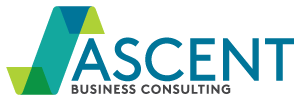LinkedIn is a valuable business tool that gains more influence with each year. Whether you want to connect (and stay connected) with your professional network, promote your consulting expertise, be seen as a thought leader in your field or simply start a conversation, LinkedIn has become indispensable. At the time of writing, “LinkedIn has 660 million members worldwide, 90 million are senior level influences. At 63 million one in ten are decision makers and 10 million are C-level executives’. (*source Oberlo Demographic)
Despite LinkedIn’s growing popularity, many of us don’t know how to leverage LinkedIn to maximize its benefits, be visible, or use the features to our advantage. In the world we live in, one inundated with technology and progress, we recommend not only having a LinkedIn profile, but using it to its fullest potential.
There are some simple things you can do, that will take your LinkedIn profile from average to amazing! All that is required is a little time and effort. Think of LinkedIn as a living CV, and just like a CV, the more time you spend getting it right, the greater the impact it will have.
Here are some recommendations to help you make the most of your Linkedin profile.
A professional image.
We live in a world where online interactions are commonplace and widely accepted as the norm. The more we can personalise our digital interactions, the more we feel connected to our audience, and vice versa.
That’s why a profile photo is so important – it is a chance to remind your LinkedIn community that there is a real person behind your online persona. According to a LinkedIn statistic “LinkedIn members with a photo receive far more engagement: 21 times more profile views and 9 times more connection requests”. (*source LinkedIn)
It is important to remember that LinkedIn is a professional networking site, so please ensure your photo is clear and as recent as possible. We recommend a head and shoulders shot. Think about who your audience is and what image you want to portray. This LinkedIn article has further helpful information on why your profile picture is so important.
Your headline is key!
The headline is the section at the top of your profile. This is where you have the chance to describe what you do. Keep it short and to the point as you only have 120 characters to work with. Your headline appears next to your name in search results, therefore it is one of the first things that is seen in a LinkedIn search. It is important that your headline describes what you do and entices the LinkedIn searcher to open your profile to find out more.
Your headline should use keywords to accurately describe what you do, your experience and your background. Keep it clear and concise. The best way for your profile to show up in searches is to ensure you have the right keywords in your headline. LinkedIn uses an algorithm to search on specific job titles, locations and skill type. A simple example is: Senior Project Manager, Digital and Cloud at Ascent Business Consulting New Zealand.
The ‘About’ section.
The ‘about’ section is where you have the opportunity to expand on your headline and to tell the world of LinkedIn about you; your experience and expertise, your key achievements, the programmes of work you have been involved in and more! Think of the ‘About’ section as a bio you would include in your CV.
A well written ‘About’ section is your chance to express yourself professionally. Take your time to make sure it is authentic to you. We also recommend the use of bullet points.
Your experience.
The ‘Experience’ section is where you get to showcase your experience and your career to date, and is a great way to stand out on LinkedIn. The more detailed this section is, the more likely your profile is going to be viewed.
In this section list all your past and current experiences. We recommend you include all your positions – consulting, contract, permanent, volunteer and any others! It is a great way for you to highlight your career path, where you have worked and the type of roles you have held.
Your experiences will be listed in chronological order and LinkedIn automatically groups consecutive positions you’ve held at the same organization into a single section. For more information on maximising this section, please refer to this great article from LinkedIn. (*source LinkedIn)
*For our Ascent Associates, this is the section where we encourage you to add Ascent Business Consulting to your experiences
Sell your skills!
There is a section called ‘Skills and Endorsements’ on LinkedIn. This section gives you the opportunity to list all the skills you have gained to date. Listing your skills outlines what you are capable of, what skills you have to offer and makes it easier for recruiters to find you in a skill search. Keep adding to this section as your skill set grows.
Some examples of skills are;
DevOps, Agile Project Delivery, Enterprise Architecture, Strategy Development, Public Sector
and a peer Having a robust list of skills provides your LinkedIn network the ability to endorse your skills and abilities, recommendation is so valuable.
Ask for recommendations!
Recommendations are an endorsement of who you are and the work you’ve delivered, and as it comes from within your network, it is viewed as extremely credible.
Nine out of ten times you will need to ask for a recommendation – and that is fully accepted in the world of LinkedIn! There are a couple of ways you can do this. We suggest asking for a recommendation via a personalised email, explaining why you would like your connection to recommend you. Alternatively, you could write a recommendation for a colleague or former colleague, and then ask for one in return.
Whatever way you approach this, just remember, you can never have too many recommendations on LinkedIn.
Our final thoughts…
These are all simple steps and certainly not rocket science. But we do feel that spending the time on your profile will see results and well worth your effort. LinkedIn is not going away, so if you haven’t already, we suggest embracing all that it has to offer.


